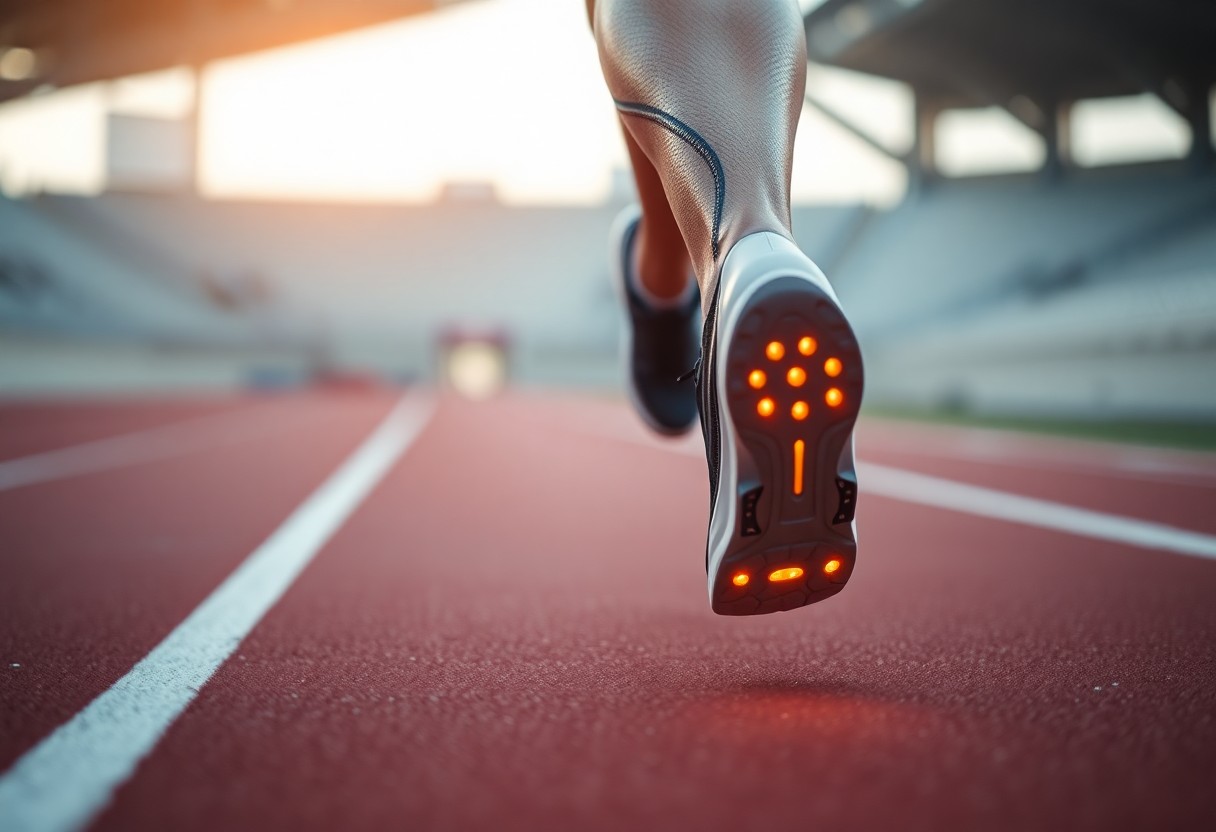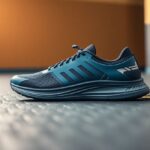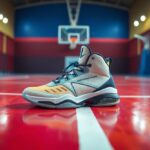
Delve into the revolutionary advancements in running footwear technology that have significantly reshaped the realm of performance optimization for endurance athletes, leading to better results and enhanced training experiences.
The realm of performance optimization in endurance running has seen a monumental shift due to the emergence of advanced footwear technology, which provides athletes with unparalleled opportunities to unlock their full potential. You will learn how innovative shoe designs can greatly minimize your metabolic expenditure while enhancing your running economy. By incorporating carbon fiber plates and state-of-the-art midsole materials, these shoes offer extraordinary energy return mechanisms capable of lowering your oxygen consumption by as much as 4%. Whether you are a seasoned professional or an enthusiastic amateur, grasping these biomechanical advancements will empower you to make educated choices about your running gear and potentially enhance your race times.
 Continue exploring as we dive deeper into the intricate mechanics of running footwear that promise to elevate your performance:
Continue exploring as we dive deeper into the intricate mechanics of running footwear that promise to elevate your performance:
Unlocking the Secrets of Energy Return Mechanisms in Advanced Running Shoes
Advanced running shoe technology employs intricate biomechanical principles to enhance energy transfer during movement. Innovative design features collaborate effectively to lessen metabolic expenditure, crafting a sophisticated framework that boosts running efficiency through meticulous material engineering and geometric designs. By concentrating on the mechanics of energy return, these shoes provide runners with a significant edge in both performance and stamina, enabling prolonged runs with minimized fatigue, thus ensuring that every mile counts.
Investigating the Curvature Dynamics of Carbon Fiber Plates for Optimal Performance
Carbon fiber plates utilize precise geometric engineering to effectively redirect kinetic energy throughout the running motion. Optimal curvature angles ranging from 12° to 15° enable maximum energy storage and return, with finite element modeling illustrating up to 93% energy return efficiency in prototype designs. These meticulously engineered plates function like springs, reducing muscular effort during toe-off phases, allowing runners to conserve energy over extended distances, which can lead to improved endurance and enhanced overall performance.
Evaluating TPU vs. EVA for Enhanced Midsole Innovations
Material selection plays a pivotal role in determining shoe performance, with thermoplastic polyurethane (TPU) emerging as a superior midsole technology. Comparative analyses highlight TPU’s marked advantages in energy return and impact absorption, equipping runners with superior biomechanical efficiency across diverse running conditions. The decision between TPU and EVA foam is essential for athletes aiming to maximize their performance while minimizing the risk of injuries during their training and competitive events.
| Energy Return | 18% higher in TPU |
| Oxygen Consumption Reduction | 2.4% lower with TPU |
A thorough investigation into midsole materials reveals intricate performance characteristics. TPU exhibits superior resilience compared to traditional EVA foam, maintaining consistent mechanical properties across thousands of compression cycles. Runners benefit from more reliable energy return, reduced fatigue, and improved long-distance performance through advancements in material science, which can have a significant impact on their overall training results and competition success.
| Impact Absorption | TPU absorbs 37% more force |
| Rebound Elasticity | 89% maintained across 50,000 cycles |
 Continue as we explore the effects of advanced footwear technology on metabolic efficiency:
Continue as we explore the effects of advanced footwear technology on metabolic efficiency:
Evaluating Metabolic Efficiency: Identifying Who Gains the Most from Advanced Footwear
The influence of advanced footwear technology is not uniform across all runners. Gains in metabolic efficiency can vary widely among different demographic groups, with variables such as gender, age, and individual biomechanics playing critical roles in enhancing performance. Researchers have unearthed intricate patterns of metabolic response, indicating that the advantages of super shoes extend beyond mere performance measures to encompass complex physiological adaptations that are unique to each runner’s biomechanical profile.
Analyzing Gender-Specific Performance Improvements
Female runners exhibit a 3.2% improvement in metabolic power, while males achieve a 4.2% improvement, revealing complex neuromuscular adaptations. Data on pelvic kinematics indicates a 14% greater reduction in hip adduction angles in females utilizing advanced footwear, providing insight into the subtle distinctions in metabolic gains between genders. Understanding these variances is essential for tailoring training and footwear selections to maximize performance benefits for each gender-specific group.
Assessing Age-Related Advantages in Endurance Performance
Masters athletes aged 40 and above show a 2.8% greater reduction in oxygen cost when utilizing super shoes, likely compensating for diminished tendon elasticity. Tibial loading assessments demonstrate a 12% reduction in cumulative stress per kilometer for older runners, indicating potential benefits in injury prevention and performance maintenance. These insights underscore the significance of advanced footwear technology in extending the competitive longevity of older athletes.
The age-related benefits of advanced footwear technology encompass far more than basic performance metrics. Biomechanical studies suggest that older runners experience more marked adaptations due to compensatory mechanisms. Reduced tendon stiffness and altered muscle recruitment patterns interact with shoe technology to create a distinct profile of performance enhancement. The energy return mechanism of the carbon plate seems to offset age-related biomechanical inefficiencies, potentially prolonging competitive running careers by alleviating the physiological challenges typically associated with aging athletes.
Continue reading to gain insights into the implications of advanced footwear technology regarding injury risks:
Examining the Influence of Running Footwear on Injury Risk
Advanced footwear technology brings forth intricate biomechanical interactions that necessitate a thorough examination of potential injury risks. Runners must weigh the benefits of performance enhancement against physiological adaptations. Longitudinal studies reveal subtle but significant shifts in muscular recruitment patterns, joint loading, and proprioceptive feedback associated with the transition to high-performance running shoes, highlighting the importance of a balanced training and recovery regimen.
Injury Analysis: Weighing the Costs of Enhanced Performance
Biomechanical investigations indicate a 9% increase in Achilles tendon strain rates among users of super shoes during high-intensity training. Plantar pressure mapping reveals a 22% increase in forefoot loading compared to traditional trainers, particularly evident during challenging terrains like downhill running. These findings suggest that while metabolic efficiency is improved, runners should adopt targeted strength and adaptation protocols to mitigate potential injury risks and safeguard long-term athletic health.
Modifying Training Protocols for Optimal Gait Adaptation
Your biomechanical response to advanced footwear necessitates strategic adjustments in your training regimen. Gait retraining is crucial for optimizing the unique energy return mechanisms of carbon-plated shoes. Runners must concentrate on developing neuromuscular patterns that align with the shoe’s biomechanical design, potentially lowering injury risk while maximizing performance gains.
Comprehensive gait adaptation strategies involve multifaceted approaches to effectively integrate advanced footwear technology. Biomechanical analyses suggest that runners typically require around 6-8 weeks of progressive training to fully acclimate to the unique mechanical properties of super shoes. This adaptation phase includes targeted eccentric strengthening regimens, modified interval training techniques, and meticulous monitoring of lower limb biomechanics. Both professional athletes and dedicated runners can gain from periodic 3D gait analyses to observe subtle shifts in movement patterns, ensuring optimal integration of advanced footwear technology with individual biomechanical characteristics.
 Explore the future of footwear technology and its implications for runners:
Explore the future of footwear technology and its implications for runners:
Innovating the Future of Running Footwear Technology
Upcoming technologies are set to redefine running shoe design, stretching the limits of biomechanical efficiency and performance optimization. Cutting-edge research is honing in on personalized solutions that adapt to individual biomechanics, utilizing advanced materials, computational modeling, and integrated sensor technologies to forge a new era of intelligent footwear crafted for elite athletes.
Transforming Footwear Design Through 3D Printed Midsoles
Lattice structure optimization algorithms now empower precise regional stiffness variations tailored to individual foot pressure maps. Prototype testing showcases a remarkable 5.1% increase in metabolic savings compared to mass-produced alternatives, with computational design facilitating unrivaled customization of midsole geometries, maximizing energy return while minimizing biomechanical stress. This revolutionary method ensures that every runner can achieve peak performance tailored to their unique physical attributes.
Integrating Smart Technology to Enhance Performance Monitoring
Emerging sensor technologies are evolving running shoes into advanced performance tracking devices. Real-time ground reaction force feedback systems can lower oxygen costs by 1.9% through micro-adjustments in cadence, granting runners immediate biomechanical insights during training and competitions. These enhancements are vital for athletes seeking to refine their techniques and performance metrics.
The integration of advanced sensors signifies a monumental advancement in performance monitoring technology. Multi-axis accelerometers, pressure-sensitive matrices, and embedded microprocessors are now capable of capturing intricate biomechanical data with unparalleled precision. These smart systems assess gait mechanics, impact forces, and energy expenditure in real-time, offering runners detailed insights into their movement patterns. Machine learning algorithms are now equipped to predict potential injury risks, optimize training loads, and propose personalized technique modifications based on exhaustive movement analysis, transforming running shoes from passive equipment into dynamic performance optimization tools.
Finally, gain a comprehensive understanding of the transformative landscape of advanced footwear technology in endurance running:
Embracing the Future of Advanced Footwear Technology for Runners
In summary, you have explored the transformative landscape of advanced footwear technology in endurance running. Your insights now encompass how innovative elements such as carbon plates and high-performance midsole materials can significantly reduce metabolic costs while enhancing running efficiency. By leveraging scientific understanding, you can appreciate that these shoes provide more than marginal enhancements—they symbolize a fundamental shift in athletic performance. Investing in such technology could lead to improved running economy, decreased energy expenditure, and optimized biomechanical responses across various athletic populations.
The Article Biomechanical Efficiency of Advanced Footwear Technology: Metabolic Cost Reduction and Performance Enhancement in Endurance Running appeared first on My Shoes Finder.
The Article Biomechanical Efficiency in Advanced Footwear for Runners Was Found On https://limitsofstrategy.com







